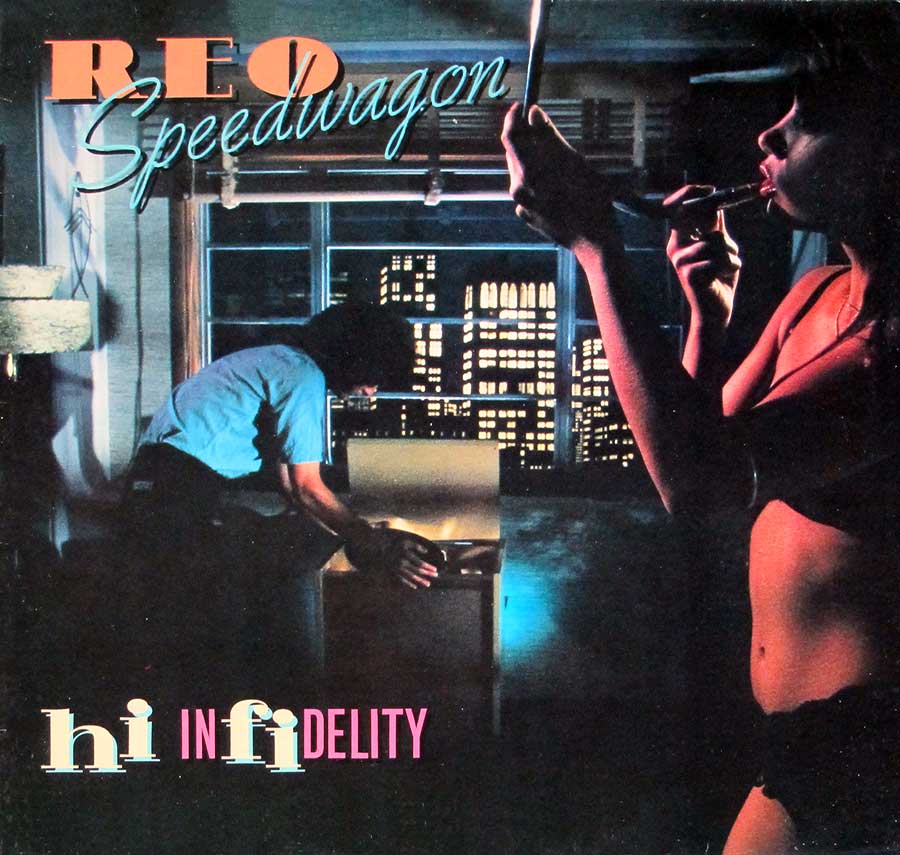REO SPEEDWAGON - Rock USA selected Vinyl discography


REO Speedwagon, the heartland rockers from Champaign, Illinois, had been grinding away for over a decade before they truly found their stratospheric success in the 1980s. After building a loyal fanbase throughout the '70s with their hard-charging rock anthems, the band achieved pop superstardom during the '80s with the release of the blockbuster album 'Hi Infidelity', fueled by some of the most enduring power ballads of the era.
The Path to 'Hi Infidelity'
Prior to the '80s, REO Speedwagon had already made a mark on the charts with hits like "Ridin' the Storm Out" and "Roll With the Changes." Their 1978 live album, 'You Get What You Play For,' solidified their status as a dynamic live act. Still, the level of success they would soon experience had eluded them. Then came 'Hi Infidelity' in 1980, and everything changed.
'Hi Infidelity': A Pop Culture Phenomenon
'Hi Infidelity' showcased a refined REO Speedwagon sound. The album's lead single, "Keep On Loving You," penned by lead singer Kevin Cronin, climbed to the top of the Billboard Hot 100 and became an instant classic. This power ballad – with its sweeping piano intro, earnest vocals, and soaring chorus – defined the era of the heartfelt rock anthem. The follow-up single "Take It On the Run" further cemented their newfound success, proving their anthemic pop sensibilities were a winning formula.
Hi Infidelity spent a staggering 15 weeks at No. 1 on the Billboard 200 albums chart. It went on to become one of the best-selling rock albums of all time, demonstrating REO Speedwagon's arrival as a commercial juggernaut.
The 80s & Beyond
REO Speedwagon's 1980s triumphs weren't limited to just 'Hi Infidelity'. Following albums like 'Good Trouble' (1982) and the synth-tinged 'Wheels Are Turnin'' (1984) continued to produce hits. In 1985, they topped the charts again with another iconic power ballad, "Can't Fight This Feeling." The song's themes of enduring love made it a favorite for weddings and mixtapes for decades to come.
While their mainstream dominance waned somewhat towards the end of the 80s, REO Speedwagon has remained a beloved band with a dedicated fanbase. They continued to tour and release albums throughout the decades that followed, solidifying their place in rock history.
While fame is fleeting, the core band members of REO Speedwagon during their 1980s chart dominance were the driving forces behind their transformation into arena-rock superstars. Here's a look at who made up REO's engine room:
Kevin Cronin (Lead Vocals, Rhythm Guitar): Cronin's instantly recognizable voice was the perfect vessel for delivering REO's signature power ballads. He was also the primary songwriter for many of their biggest hits like "Keep On Loving You," "Can't Fight This Feeling," and "Take It On the Run."
Neal Doughty (Keyboards): Doughty's keyboard work became emblematic of REO Speedwagon's 1980s sound. His piano intros and synth flourishes added emotional richness and a melodic depth that fueled many of their anthems.
Gary Richrath (Lead Guitar): Richrath was a true guitar hero of the era. His blistering solos and powerful riffs provided the rock-solid foundation upon which REO constructed their stadium-sized sound. Sadly, he passed away in 2015.
Bruce Hall (Bass Guitar): Hall's driving basslines were the steady pulse that anchored REO Speedwagon's sound, providing a rhythmic backbone for their sing-along anthems.
Alan Gratzer (Drums): Gratzer's drumming was rock-solid, providing both power and precision. He laid down the rhythmic foundation for the band's infectious grooves and heartfelt balladry.
The Dynamic of the Band
These five core members made up REO Speedwagon's classic lineup, responsible for the string of hits that catapulted them to global fame. The chemistry between Cronin's heartfelt songwriting and vocals, Richrath's fiery guitar work, Doughty's keyboard textures, and the rhythmic backbone of Hall and Gratzer created a pop-rock force.
Though the band's personnel has evolved over the years, their '80s era is remembered as the time when this particular lineup brought their arena-filling sound and those iconic power ballads to the world.